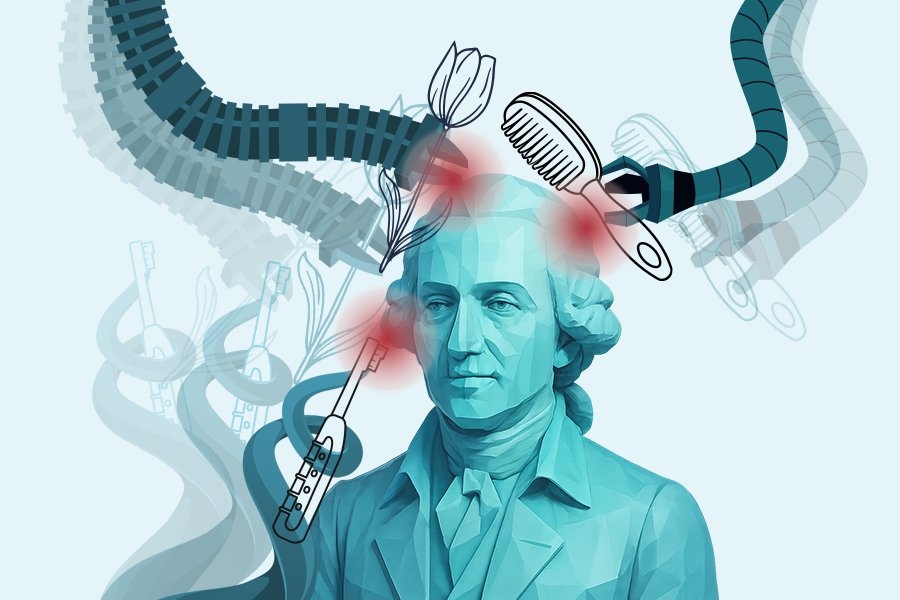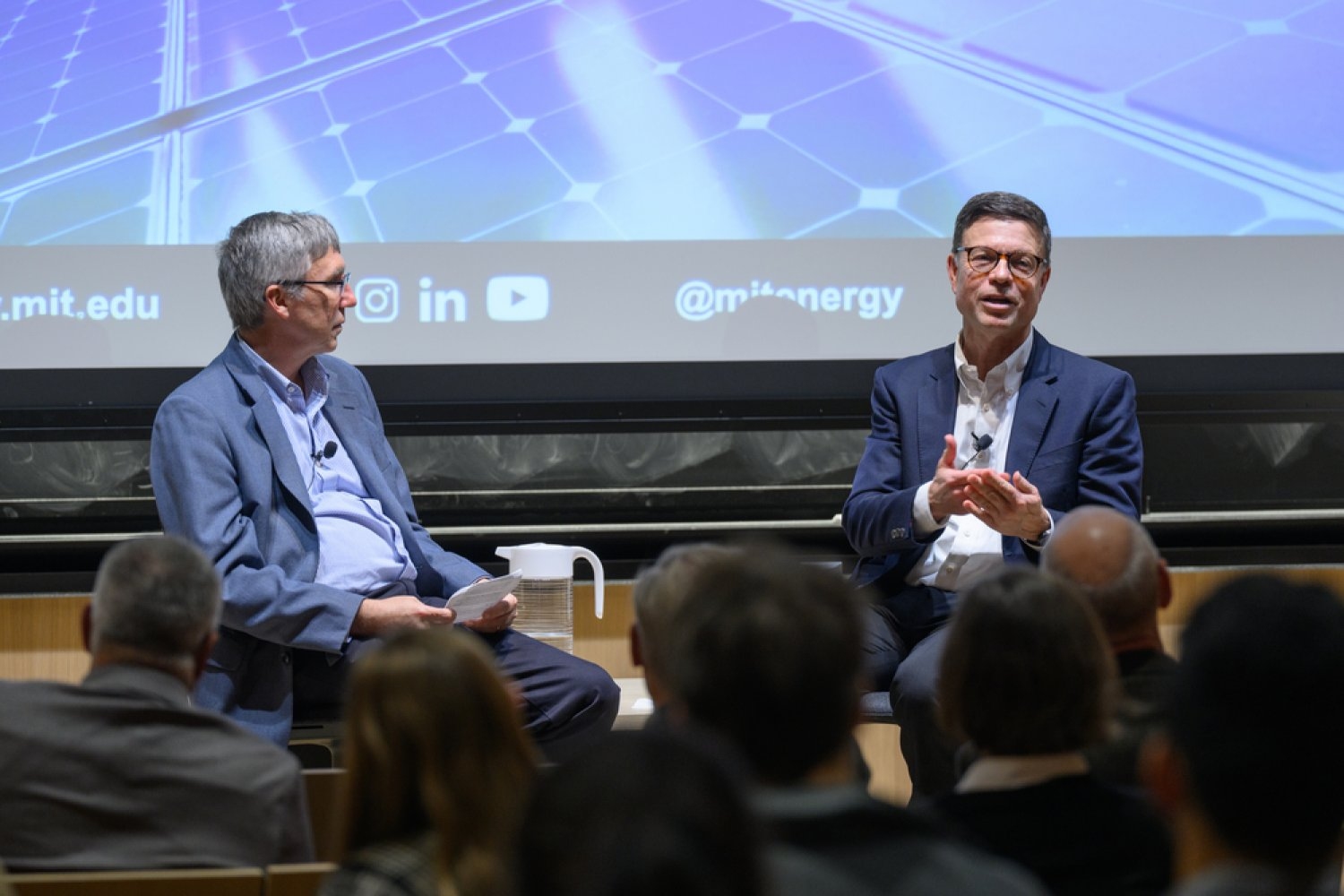Researchers built a four-atom-thick transistor combining an atomically thin semiconductor and molecular crystal. It uses charge localization and works at room temperature. [...]
Wed, Dec 03, 2025Source Nanowerk
Within tissues, cells are embedded in complex, three-dimensional structures known as the extracellular matrix. Their biomechanical interactions play a crucial role in numerous biological processes. Scientists at the Max Planck Institute for the Science of Light (MPL) have now developed a novel lab-on-a-chip system based on intelligent hydrogel structures, which [...]
Wed, Dec 03, 2025Source Nanowerk
Samsung phones come packed with apps - but some actually worsen the performance. Here are five I'd remove right now. [...]
Wed, Dec 03, 2025Source ZDNet – Big Data
Samsung phones are full of smart features, but most people overlook many of them. Here are a few that make a big impact. [...]
Wed, Dec 03, 2025Source ZDNet – Big Data
Imagine having a continuum soft robotic arm bend around a bunch of grapes or broccoli, adjusting its grip in real time as it lifts the object. Unlike traditional rigid robots that generally aim to avoid contact with the environment as much as possible and stay far away from humans for [...]
Tue, Dec 02, 2025Source MIT – AI
Some white dwarfs in rapid binary orbits are far hotter and larger than theory predicts. Researchers found that powerful tidal forces between them generate enough heat to inflate their sizes and change their orbital behavior. This leads the stars to interact much sooner than expected, potentially triggering dramatic cosmic events. [...]
Tue, Dec 02, 2025Source Science Daily
A UC Irvine team uncovered a never-before-seen quantum phase formed when electrons and holes pair up and spin in unison, creating a glowing, liquid-like state of matter. By blasting a custom-made material with enormous magnetic fields, the researchers triggered this exotic transformation—one that could enable radiation-proof, self-charging computers ideal for [...]
Tue, Dec 02, 2025Source Science Daily
I'm live-tracking deals on the most popular streaming services for Cyber Monday, at the lowest prices of the year -- but hurry -- these offers are ending soon. [...]
Tue, Dec 02, 2025Source ZDNet – Big Data
Black Friday is over, and Cyber Monday has arrived. Every major retailer is offering big sales on items from Apple, Samsung, LG, Roku, and more. [...]
Tue, Dec 02, 2025Source ZDNet – Big Data
Researchers created tough hydrogel artificial tendons, attached them to lab-grown muscle to form a muscle-tendon unit, then linked the tendons to a robotic gripper's fingers. [...]
Mon, Dec 01, 2025Source Nanowerk
Ultrablack reflects less than 0.5% of light and is useful for cameras, solar panels, and telescopes but is hard to make and fades at angles, and researchers have now found a simple method to produce it. [...]
Mon, Dec 01, 2025Source Nanowerk
Norway is the world’s largest producer of farmed Atlantic salmon and a top exporter of seafood, while the United States remains the largest importer of these products, according to the Food and Agriculture Organization. Two MIT students recently traveled to Trondheim, Norway to explore the cutting-edge technologies being developed and [...]
Mon, Dec 01, 2025Source MIT – AI
Advancements in battery innovation are transforming both mobility and energy systems alike, according to Kurt Kelty, vice president of battery, propulsion, and sustainability at General Motors (GM). At the MIT Energy Initiative (MITEI) Fall Colloquium, Kelty explored how GM is bringing next-generation battery technologies from lab to commercialization, driving American [...]
Mon, Dec 01, 2025Source MIT – AI
Researchers developed an AI system that can reconstruct fine hand muscle activity using only standard video footage. Traditionally, this type of measurement required intrusive electrodes attached to the skin, but the new method eliminates that need entirely. [...]
Mon, Dec 01, 2025Source Neuroscience News – Deep Learning
Welcome back to The State of AI, a new collaboration between the Financial Times and MIT Technology Review. Every Monday for the next two weeks, writers from both publications will debate one aspect of the generative AI revolution reshaping global power.
This week, Richard Waters, FT columnist and former West Coast [...]
Mon, Dec 01, 2025Source Technology Review – AI
Engineers have unlocked a new class of supercapacitor material that could rival traditional batteries in energy while charging dramatically faster. By redesigning carbon structures into highly curved, accessible graphene networks, the team achieved record energy and power densities—enough to reshape electric transport, stabilize power grids, and supercharge consumer electronics. [...]
Mon, Dec 01, 2025Source Science Daily
Researchers unveiled a new technique that validates quantum computer results—especially those from GBS devices—in minutes instead of millennia. Their findings expose unexpected errors in a landmark experiment, offering a crucial step toward truly reliable quantum machines. [...]
Mon, Dec 01, 2025Source Science Daily
A US telecom company trained an AI model on years of inmates’ phone and video calls and is now piloting that model to scan their calls, texts, and emails in the hope of predicting and preventing crimes.
Securus Technologies president Kevin Elder told MIT Technology Review that the company began building [...]
Mon, Dec 01, 2025Source Technology Review – AI
Princeton researchers found that the brain excels at learning because it reuses modular “cognitive blocks” across many tasks. Monkeys switching between visual categorization challenges revealed that the prefrontal cortex assembles these blocks like Legos to create new behaviors. This flexibility explains why humans learn quickly while AI models often forget [...]
Fri, Nov 28, 2025Source Science Daily – Cybernetics
Researchers developed an AI tool that detects chronic stress by measuring adrenal gland volume on routine chest CT scans. This biomarker aligns with cortisol levels, stress questionnaires, and future cardiovascular outcomes, offering the first imaging-based method to quantify stress load in the body. [...]
Wed, Nov 26, 2025Source Neuroscience News – Deep Learning
Separating AI reality from hyped-up fiction isn’t always easy. That’s why we’ve created the AI Hype Index—a simple, at-a-glance summary of everything you need to know about the state of the industry.
Last year, the fantasy author Joanna Maciejewska went viral (if such a thing is still possible on X) with [...]
Wed, Nov 26, 2025Source Technology Review – AI
Large language models (LLMs) sometimes learn the wrong lessons, according to an MIT study.Rather than answering a query based on domain knowledge, an LLM could respond by leveraging grammatical patterns it learned during training. This can cause a model to fail unexpectedly when deployed on new tasks.The researchers found that [...]
Wed, Nov 26, 2025Source MIT – AI
Welcome back to The State of AI, a new collaboration between the Financial Times and MIT Technology Review. Every Monday, writers from both publications debate one aspect of the generative AI revolution reshaping global power.
In this week’s conversation MIT Technology Review’s senior reporter for features and investigations, Eileen Guo, and [...]
Mon, Nov 24, 2025Source Technology Review – AI
A new study reveals African lions produce two types of roars, overturning long-held assumptions and opening the door to more precise wildlife monitoring. Using machine learning, researchers automatically distinguished between full-throated and newly identified intermediary roars with over 95% accuracy, eliminating much of the human bias in vocal identification. [...]
Sun, Nov 23, 2025Source Neuroscience News – Deep Learning
A new study demonstrates that an AI assistant can conduct psychiatric assessment interviews with greater diagnostic accuracy than widely used mental health rating scales. In a sample of 303 participants with confirmed psychiatric conditions, the AI assistant Alba provided DSM-based diagnostic suggestions after a brief conversational interview, outperforming rating scales [...]
Thu, Nov 20, 2025Source Neuroscience News – Deep Learning
Electrons can freeze into strange geometric crystals and then melt back into liquid-like motion under the right quantum conditions. Researchers identified how to tune these transitions and even discovered a bizarre “pinball” state where some electrons stay locked in place while others dart around freely. Their simulations help explain how [...]
Sun, Nov 16, 2025Source Science Daily – Cybernetics
Aalto University researchers have developed a method to execute AI tensor operations using just one pass of light. By encoding data directly into light waves, they enable calculations to occur naturally and simultaneously. The approach works passively, without electronics, and could soon be integrated into photonic chips. If adopted, it [...]
Sun, Nov 16, 2025Source Science Daily – Cybernetics
Researchers have created a prediction method that comes startlingly close to real-world results. It works by aiming for strong alignment with actual values rather than simply reducing mistakes. Tests on medical and health data showed it often outperforms classic approaches. The discovery could reshape how scientists make reliable forecasts. [...]
Fri, Nov 14, 2025Source Science Daily – Cybernetics









